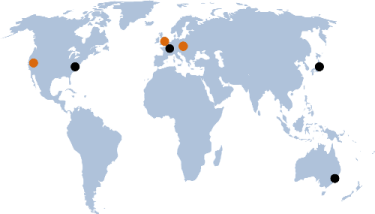comment
We are happy to announce the release of Bolero version 0.13. Bolero is a library that enables writing full-stack applications in F#, whose client side runs in WebAssembly using Blazor.
This release requires the .NET Core SDK version 3.1.300 or newer, which you can download here for Windows, OSX or Linux.
Install the latest project template with:
1
dotnet new -i Bolero.Templates::0.13.6
If you have an existing Bolero project, you can check the upgrade guide to learn how to update your project for Bolero 0.13.
Blazor 3.2.0 final release
The Blazor team have released their first stable version, v3.2.0. Congratulations to them!
In Bolero 0.13, we have updated the dependencies to v3.2.0, and as a consequence, we have also removed the preview tag from Bolero's package version.
Improved server-side hosting
Bolero applications can be hosted by an ASP.NET Core server, not only when running in server-side mode, but also in WebAssembly mode. This enables features such as server-side prerendering of the page contents. Until v0.12, some of the hosting configuration logic was implemented in the Bolero project template, in a file called HostModel.fs and in the server-side Razor page _Host.cshtml.
In v0.13, this logic has been streamlined into Bolero.Server. HostModel.fs is now gone, _Host.cshtml is simpler, and configuration is centralized in the ASP.NET Core application startup. See the upgrade guide for how to adapt an existing project.
1 2 3 4 5 6 7 8
open Microsoft.Extensions.DependencyInjection
open Bolero.Server.RazorHost
type Startup() =
member _.ConfigureServices(services: IServiceCollection) =
services.AddBoleroHost() |> ignore
// Add other services, including MVC...This method AddBoleroHost() has optional arguments that configure the hosting of Bolero applications:
server: booldecides where the application runs: in WebAssembly ifserver = false, or on the server ifserver = true. The default isfalse.prerendered: booldecides whether the application's initial view should be prerendered in the served HTML (true), or should be blank and only rendered once the application is loaded (false).devToggle: bool: when this istrueand the ASP.NET Core application runs in theDevelopmentenvironment, theserveroption can be temporarily overridden by passing?server=trueor?server=falsein the URL. This is particularly useful when developing a WebAssembly application, to temporarily switch to server mode for easier debugging.
Component attributes
It is simple to use Blazor components from Bolero: call the comp function parameterized by the component type, then pass a list of attributes and a list of children, and voilà. Here is an example using the MatBlazor library for Material UI style components:
1 2 3 4 5 6 7 8
open Bolero.Html
open MatBlazor
let myButton =
comp<MatButton>
[ "Icon" => "favorite"
"Link" => "https://github.com/BlazorComponents/MatBlazor" ]
[ text "Click me!" ]However, some attribute types need specific handling. Bolero 0.13 adds functions for the following:
EventCallback<T>can be used using one of the following functions:attr.callback : string -> (T -> unit) -> Attrto create a synchronous handler;attr.async.callback : string -> (T -> Async<unit>) -> Attrorattr.task.callback : string -> (T -> Task) -> Attrto create an asynchronous handler.For example:
1 2 3 4
let myButton (js: IJSRuntime) = comp<MatButton> [ attr.task.callback "OnClick" (fun _ -> js.InvokeVoidAsync("alert", "Clicked!").AsTask()) ] [ text "Click me!" ]
RenderFragmentandRenderFragment<T>can be used using the following functions:attr.fragment : string -> Node -> AttrforRenderFragment;attr.fragmentWith : string -> (T -> Node) -> AttrforRenderFragment<T>. For example:`fsharp open MatBlazor type Car = { Name: string Price: decimal Horsepower: int } type Model = { Cars: Car[] } let myTable model dispatch = comp<MatTable> [ "Items" => model.Cars attr.fragment "MatTableHeader" ( concat [ th [] [ text "Name" ] th [] [ text "Price" ] th [] [ text "Horsepower"] ] ) attr.fragmentWith "MatTableRow" (fun (car: Car) -> concat [ td [] [ text car.Name ] td [] [ textf "%.2f" car.Price ] td [] [ textf "%i" car.Horsepower ] ] ) ] []`
Happy coding!







